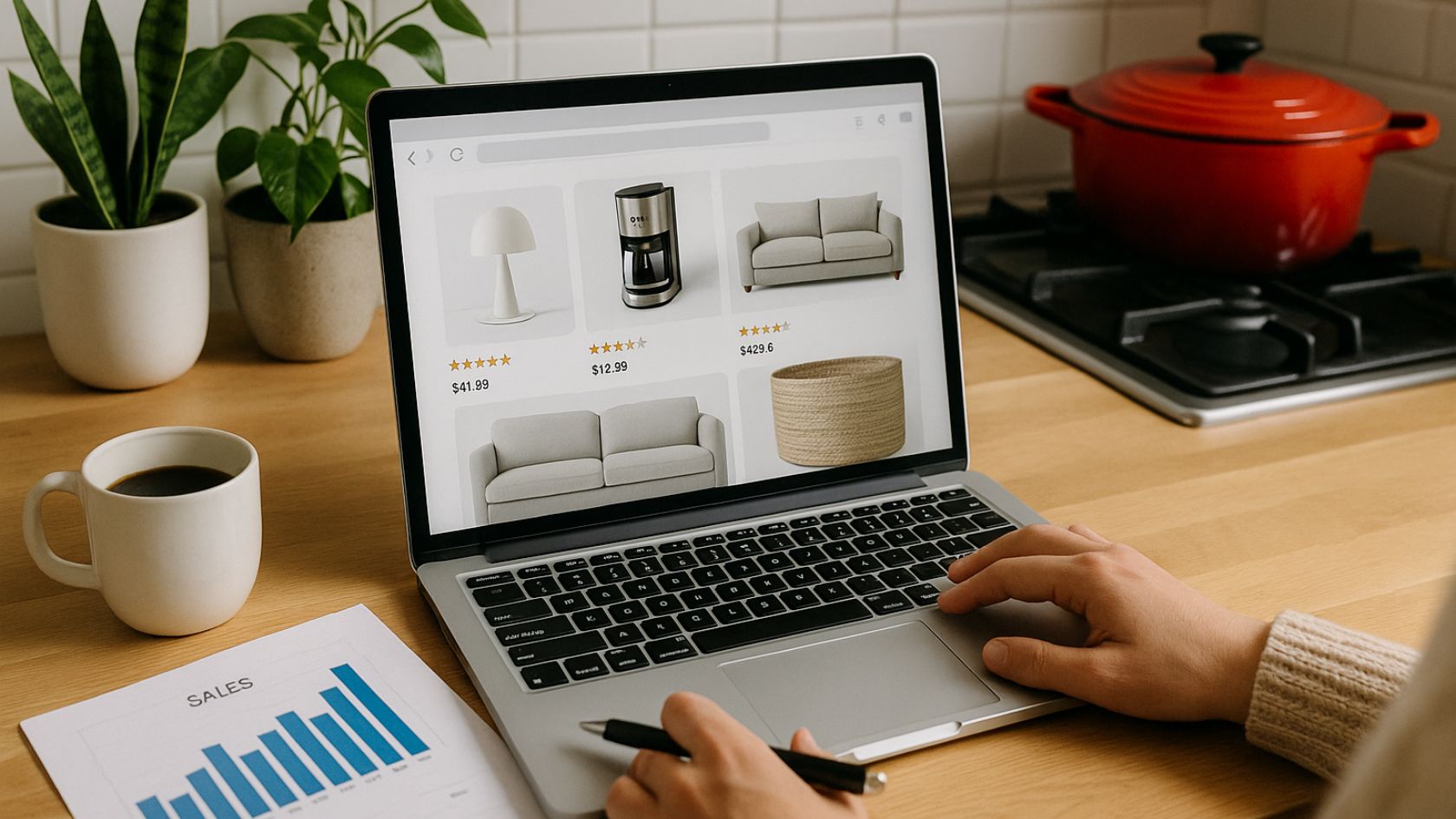
Top Converting Home Products: Strategies, Examples, and Step-by-Step Playbook

Top Converting Home Products are the foundation of profitable eCommerce because they reliably turn casual browsers into satisfied buyers while lifting your overall store metrics. In this comprehensive guide, you’ll learn how to identify what converts, how to merchandise it, and how to build a repeatable optimization playbook that compounds results month after month.
Before you pick a product, validate demand by scanning seasonality, search intent, and social proof across multiple sources. A quick pass through trending products lists, marketplace bestseller charts, and social listening can surface product opportunities you might otherwise miss. Pair this with basic keyword research to ensure the addressable search volume exists and the buyer intent matches your offer.
What makes a product “convert”? Look for clear problem–solution fit, easy-to-explain benefits, social proof that reduces risk, and a price band that feels like an easy yes for your target customer. From a metrics view, track conversion rate (CVR), average order value (AOV), add-to-cart rate, checkout completion rate, and refund rate; together they tell you whether a product brings the right clicks and the right customers.
As you scale, diversify acquisition with partners and content collaboration. Structured programs built on reliable affiliate networks let you tap creators and publishers at predictable unit economics while expanding reach beyond ads you control. Start small, set clear payout rules, and tier commissions to reward quality traffic and sales.
How to Identify Top Converting Home Products
- Define the job-to-be-done: Write the one-liner that explains what problem the product solves at home (e.g., “Kill clutter in small apartments”). If the one-liner is hard, it won’t sell.
- Check demonstrability: Can you show the transformation in under 10 seconds with a photo or short clip? Demonstrable products convert better.
- Scan reviews and returns: Read negative reviews on marketplace listings to understand failure modes to avoid and features to highlight.
- Lightweight usage: Products that don’t require installation, expertise, or ongoing refills typically face less friction at checkout.
- Giftability and bundleability: If it bundles naturally with other items (e.g., storage bins + labels), you can lift AOV immediately.
Quick research stack: search “[room] + problem” (e.g., “kitchen counter clutter”), read subreddit threads, mine app store reviews for smart-home pain points, and compare top images from SERPs to see how competitors visually sell benefits.
Product Ideas That Consistently Convert
1) Smart Plugs and Switches
Why they convert: Low-cost entry to smart home convenience; the transformation is easy to show. They solve daily annoyances like turning off lamps and holiday lights.
How to market: Lead with compatibility (“Works with Alexa/Google Home”), show a one-tap automation clip, and present bundles of 2–4 for value + AOV lift.
2) LED Strip Lights
Why they convert: Visual payoff for bedrooms, desks, and TVs; strong UGC potential; impulse-friendly price point.
How to market: Show before/after shots, include a color-temperature guide, and upsell a remote or smart hub.
3) Robot Vacuums
Why they convert: Time-saving and aspirational; clear ROI in hours saved per week; growing trust in mid-tier brands.
How to market: Compare run-time, suction power, and mapping; add a 30-day trial and accidental-damage plan to reduce risk.
4) Air Purifiers
Why they convert: Health-forward and seasonal (allergies, wildfires); qualitative benefits backed by PM2.5 metrics.
How to market: Educate with a short “filter types” explainer, highlight CADR numbers, and show noise-level comparisons at night mode.
5) Multipurpose Kitchen Gadgets
Why they convert: Save time and reduce cleanup; space-saving for small kitchens.
How to market: Demonstrate one task per 3–5 second clip (spiralizing, slicing, storing); pair with dishwasher-safe claims and recipe PDFs.
6) Storage & Organization Solutions
Why they convert: Simple, inexpensive wins that make homes feel larger and calmer.
How to market: Use visual checklists (pantry, closet, bath), bundle labels + bins, and show “Sunday reset” routines.
7) Shower Filters
Why they convert: Tangible difference in water feel; beauty/wellness overlap.
How to market: Show install in 60 seconds, explain filter lifespan and refill schedule, and anchor with dermatologist quotes.
8) Weighted Blankets
Why they convert: Sleep and anxiety relief; wide giftability; repeat purchases for family.
How to market: Sizing chart by height/weight, fabric swatches, and care instructions reduce returns and boost confidence.
9) Bidet Attachments
Why they convert: Hygiene benefits, eco-friendly angle, and recurring referrals once installed.
How to market: A playful but tasteful tone, installation GIFs, and side-by-side comparisons with toilet paper costs.
10) Cordless Vacuums & Handhelds
Why they convert: Lightweight convenience, car detailing, pet hair—the use cases sell themselves.
How to market: Emphasize battery life, attachments, and quick-dock storage to keep it visible and used.
Optimization Playbook: From Click to Purchase
- Hero section: Lead with the primary benefit, not the feature. Use a tight headline and a 6–10 second demo video loop.
- Proof stack: Place star ratings, review snippets, and a trust badge row above the fold. Add a short “As seen in” strip if legitimate.
- Offer clarity: Spell out what’s included, who it’s for, price, and delivery ETA. Show a single clear CTA and a secondary “Learn more.”
- Objection handling: Add a collapsible FAQ beneath the fold that addresses install, returns, warranty, and compatibility.
- Bundles and cross-sells: Pre-configure 2–3 value bundles (Good/Better/Best) on the PDP; use pre-checked cart add-ons sparingly.
- Checkout trust: Keep express pay options, show shipping/returns summary, and minimize fields (auto-fill everything possible).
A/B test starter set:
- Headline: benefit-led vs. feature-led
- CTA: “Add to Cart” vs. “Get Yours Today”
- Price endings: .00 vs. .99 vs. charm pricing bundles
- UGC first vs. polished studio photo first
- Trust badges: row above fold vs. near CTA
Marketing Tactics That Boost Conversion
1) Search + Content
Publish “how to fix [problem] at home” guides that lead naturally to your solution. Use comparison posts (e.g., “Air purifier vs. humidifier”) and clear pros/cons tables. Embed short product clips and a sticky CTA so readers never have to hunt for the next step.
2) Social Proof and UGC
Invite customers to submit 10–20 second clips showing the before/after moment. Incentivize with loyalty points instead of discounts. Curate the top 5 and pin them on the PDP and homepage. UGC sustains authenticity in categories where glossy ads feel suspicious.
3) Email/SMS Flows
- Welcome: Problem framing + top benefit, then a social proof message, then an offer.
- Cart: 3-touch sequence: benefit reminder, objection FAQ, and last-call incentive.
- Post-purchase: Setup tips, “first-week success” checklist, then a cross-sell (e.g., filters, attachments, or bundles).
4) Reviews and Guarantees
Show verified purchase badges, highlight “most helpful” reviews, and place three review cards near the first CTA. Pair with a simple 30-day money-back guarantee to reduce buyer risk—especially effective for new brands and higher-ticket items.
Pricing, Offers, and Merchandising
Price within the “easy yes” band for your audience. For many home categories, that’s $15–$49 for impulse buys and $99–$299 for hero products. Use bundles to create perceived savings without training customers to wait for discounts. Display per-use cost for consumables and time-saved estimates for devices.
- Anchoring: Show the MSRP crossed out only when factual; use a “Compare at” table if you have a legitimate reference.
- Urgency: Use inventory-based urgency (“Only 12 left”) over fake timers; customers notice authenticity.
- Bonuses: Add small but valuable bonuses (e.g., recipe PDF, labels, cable clips) that cost little but increase perceived value.
Store UX and Technical Best Practices
- Speed: Aim for sub-2.5s LCP on mobile. Compress media and lazy-load below-the-fold assets.
- Accessibility: Use 16px+ body text, sufficient color contrast, and clear focus states for interactive elements.
- Navigation: Keep categories obvious (Kitchen, Cleaning, Organization, Wellness). Add a “Most Gifted” filter to aid gift shoppers.
- Search: Autocomplete, synonyms (e.g., “vacuum” = “hoover”), and recent searches increase findability and conversion.
- Tracking: Measure add-to-cart, begin-checkout, and checkout-step events to find friction quickly.
Measurement: Make Decisions with Data
Set north-star goals for each product: target CVR, target AOV, and acceptable CAC. For example, a $39 product might aim for a 4–6% CVR with 25% of orders including a $12 add-on. Review funnel metrics weekly and annotate all tests and offer changes so you can attribute lifts accurately.
- Weekly review: CVR by device, top exit pages, top search terms, and refund reasons.
- Monthly deep dive: Cohort analysis (first vs. repeat buyers), product-return root causes, and LTV by entry product.
- Quarterly reset: Retire underperformers, expand winners into bundles, and test a new hero product.
Common Pitfalls (and Quick Fixes)
- Feature bloat copy: Fix by leading with a single benefit and a concise subhead.
- Unclear sizing/compatibility: Add size charts, model lists, and quick-fit photos to reduce returns.
- Too many CTAs: Consolidate primary actions and remove anything that distracts from the add-to-cart path.
- No post-purchase experience: Create a setup guide email and a “first-week success” checklist to grow advocacy and reviews.
Conclusion
Winning with Top Converting Home Products comes down to three habits: pick products with obvious before/after transformation, merchandise benefits with real proof, and keep iterating your offers and PDPs with disciplined testing. When you pair this with systematic partner acquisition and smart campaign research—using tools and directories such as dropship product intelligence—you’ll create a repeatable engine that steadily raises conversion rate, average order value, and customer lifetime value. Start with one hero product, validate quickly, and scale what the data proves.
If you apply the steps above—research signals, demonstrable benefits, clean PDPs, and measurement discipline—you’ll be able to identify products that truly earn their place on your shelves and build a brand customers trust.